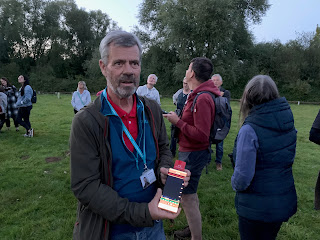We are very excited to announce that the Species on the Edge Youth Panel is now open for applications! Are you aged between 16 and 25, based in one of the Species on the Edge project areas, and passionate about your local wildlife? If so, this is an opportunity for you!
In this blog post we’ll tell you everything you need to know
about the Youth Panel. But first, here’s a short introduction to the programme
and a look at what Cathryn, the Bat Conservation Trust project officer for
Species on the Edge, has been up to so far.
Species on the Edge
Bat Conservation Trust is one of eight organisations working
together on Species
on the Edge, a new multi-partner conservation programme dedicated to supporting vulnerable
and threatened species found along Scotland’s coast and islands. With a
programme cost of over £6 million, and £4 million funding from The National
Lottery Heritage Fund, the programme will be active for the next four years
across seven project areas in Scotland.
Cathryn is one of four Species on the Edge Project Officers working in the Argyll and Inner Hebrides project area. Cathryn is based on the Isle of Skye and, having grown up there, knows the island and many of its inhabitants well. However, since the programme began earlier this year she has enjoyed making the acquaintance of some inhabitants she, nor many people, are very familiar with: the island’s bats! Historically, there are very few records of bats on Skye and no one actually knows for sure how many species are present there.
So, the first task for Cathryn was to establish a monitoring programme. So far, Cathryn has encountered many pipistrelles and one of our more elusive target species, the brown long-eared bat. Our other target bat species, the Daubenton’s bat, remains to be recorded on Skye. Cathryn is very grateful to the many people that have joined her for bat walks over the past few months, helping to monitor the island’s bat populations. Getting local people engaged in monitoring and supporting their local species is crucial to the survival of Scotland’s threatened species, and this is where the Species on the Edge Youth Panel comes in!
.jpg) |
| Brown long-eared bat (c) Hugh Clark |
The
Species on the Edge Youth Panel
%20(3).jpg) |
| (c) Sam Stringer |
The purpose of the Species on the Edge Youth Panel is to bring together young people from around the country and support them to develop the skills and confidence to become champions for their local wildlife in their communities.
The Species on the Edge Youth Panel will comprise of 14 young people between the ages of 16 and 25 from across the Species on the Edge project areas. Panellists will meet at least four times a year online to discuss issues relating to the natural environment and their communities. Panellists will also have the opportunity to join a fully funded spring residential.
- meet new people and learn from experts within the conservation sector
- receive training and develop their skills, confidence and employability
- receive support in developing their own project to encourage others to connect with nature.
Applications will open on 2nd October. More information about the opportunity can be found on the Species on the Edge website. A notification of when applications open will be sent out via email to the Species on the Edge mailing list. To receive this notification, sign up for the mailing list here. If you have any questions about the Species on the Edge Youth Panel, or about Species on the Edge activity more generally, get in touch via SOTE@nature.scot.















